Mourning Buttons
By Nicole Lind
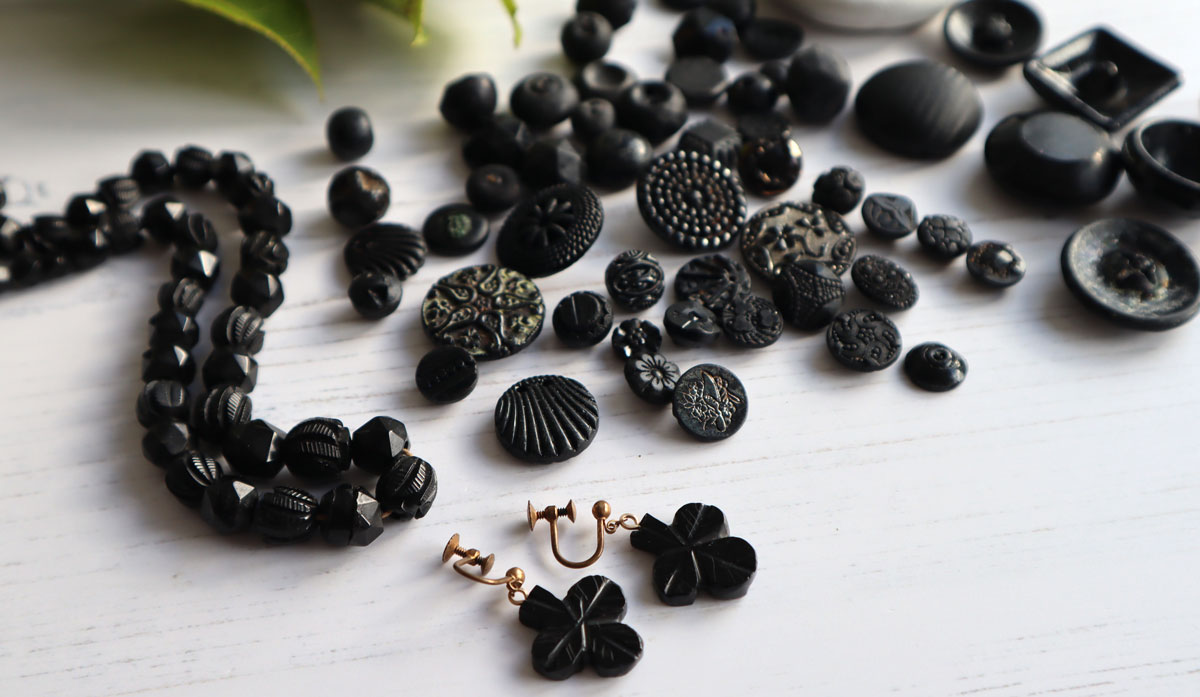
Have you ever found a black glass button at the beach? You might have found a mourning button dating back to Victorian times.
For Victorians, to die and not be appropriately mourned was considered a tragedy worse than death, so immortalizing and remembering the dead took on enormous societal importance. Mourning clothes were considered an outward expression of a person’s inner feelings.
Mourning customs applied to everyone—every social class, from the poor to the wealthy. But it was a costly business. Many people couldn’t afford new wardrobes so they very quickly dyed their existing clothes black and changed the buttons.
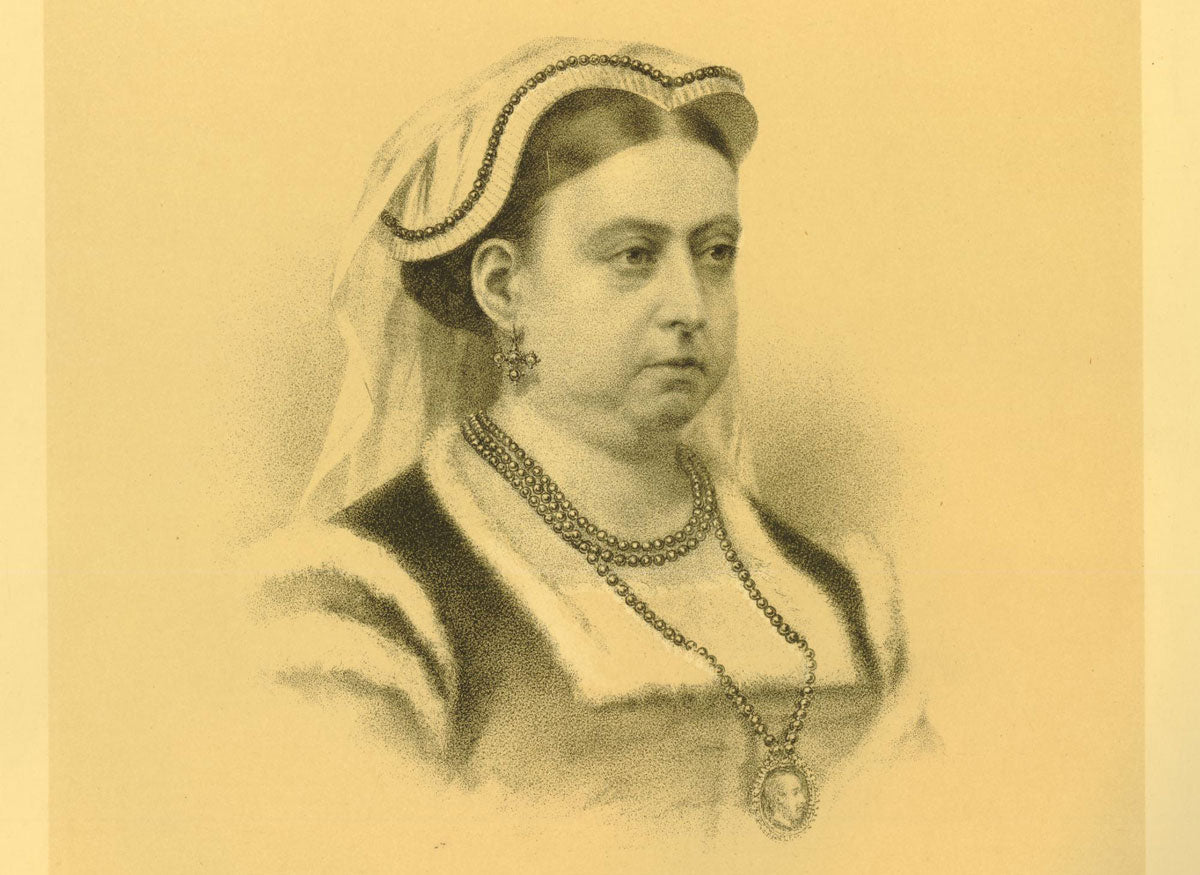
Portrait of Queen Victoria in mourning (The Trustees of the British Museum)
When Prince Albert died in 1861, Queen Victoria began wearing full mourning clothes and jewelry—especially jet—demanding that her courtiers also wear jet. Jet is an organic material found mainly on the beaches of Whitby, England (just south of Seaham). This velvety-black gemstone is a type of coal (petrified wood) that is easy to carve. It became popular after it was shown at the world exhibition in London 1851, with Queen Victoria making it even more popular ten years later. But jet was costly and not everyone was able to afford genuine jet.
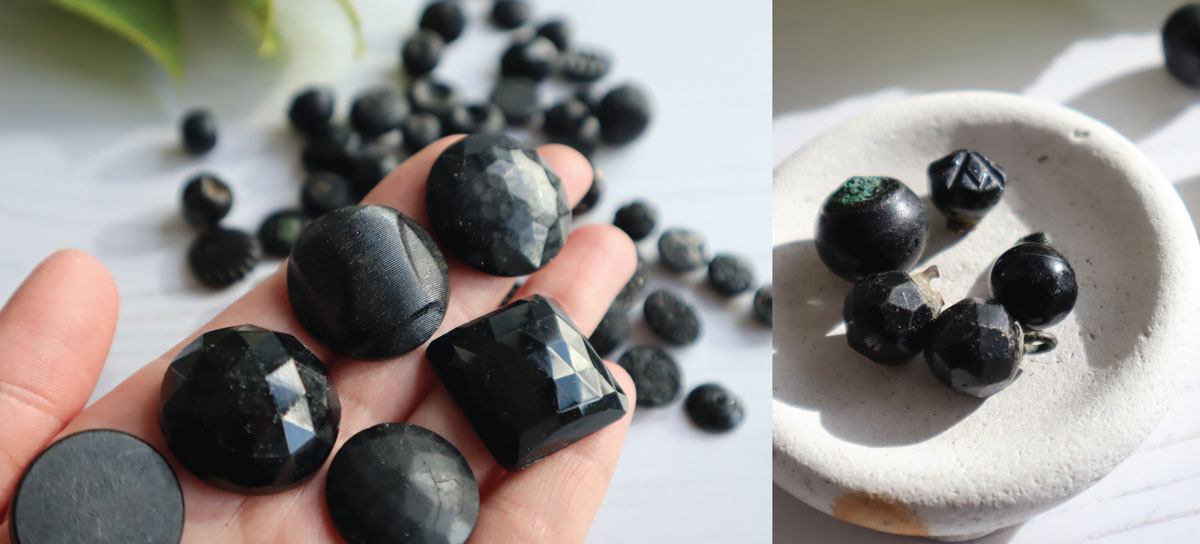
Button manufacturers were looking for cheaper alternatives so they could continue to sell buttons to the less wealthy. Although jet was in high demand, it was much easier to press mold buttons from glass and call it “jet glass.” If you are looking for antique jet jewelry be aware that “French Jet” is generally glass and not the actual gemstone.
Black glass was invented by Venetian glass artist Andrea Videos in the late 17th century. In the Victorian era, most glass buttons were manufactured in Bohemia in the eastern part of the present-day Czech Republic. Lampworking processes sped up the process of making buttons and made them more affordable. By the 1860s, thousands of intricate button designs were created by Czech artisans. The detailed black glass buttons were hand finished with gold, silver, or copper luster. Some buttons depicted shamrocks, birds, horse shoes, and flowers.
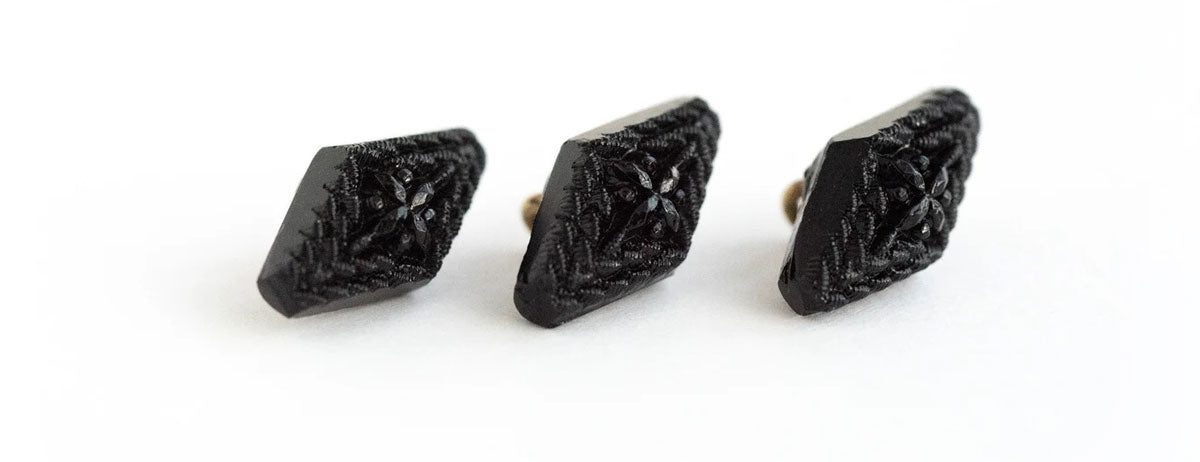
French Jet buttons (MyButtonMoon).
How can you identify jet from glass? If you have found a button, rub it across a piece of paper or an unglazed ceramic tile. If it is jet, it will leave a brown mark. If you try shining a very strong light source through your button and it shows a hidden color, such as purple, then it’s glass.
The feel of the button and the placement of its shank (the loop on the back where the thread attaches the button to the garment) can also help to identify if it’s jet. A jet button is warm to the touch, scratches easily, and has a velvety rather than smooth surface. A glass button is heavier, harder, and feels cold to the touch. If the shank is part of the button, it’s glass. If the shank is glued or attached to the outside, it’s more likely jet.
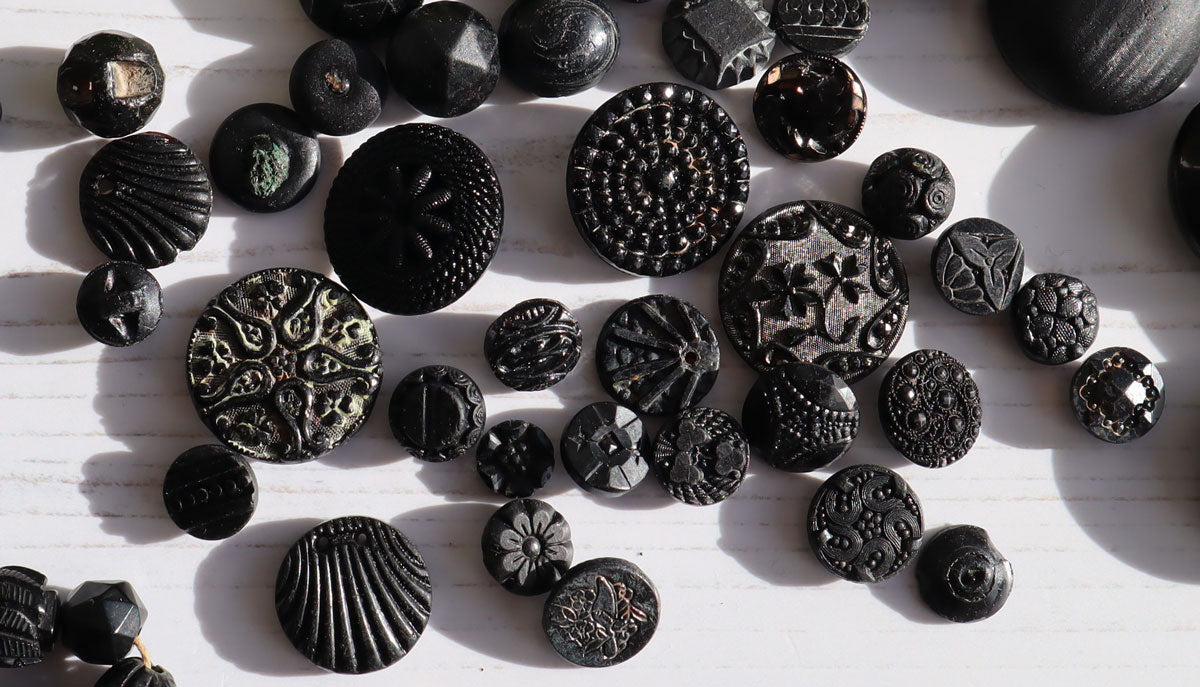
Other materials that were used for mourning jewelry in general were bog oak, gutta-percha, vulcanite, and black stones such as onyx. These buttons were sometimes accented with tiny seed beads that represent tears, hair, and even teeth!
Mourning rituals were taken very seriously in Victorian England. The official length of mourning depended upon the relationship one had with the deceased. Widows were expected to wear full mourning for two years. Full mourning entailed wearing only dull black fabrics, non-reflective paramatta silk, or the less-expensive bombazine, trimmed with crepe. Crepe is a very stiff material, somewhat lifeless itself. Minimal or no jewelry was to be worn.
The first year of mourning widows could only wear matte buttons. After this period the crepe could be removed—this was called “slighting the mourning.” During the second year, half matte and half shiny buttons were acceptable, combined with white lace or trim on the dress. Three years after the passing of her husband, a widow was allowed to wear grey or lavender-colored dresses. This period is referred to as “half mourning.”
In addition to wearing only black during deep mourning, a widow could not go out in society except to attend church. Wearing colorful or flattering clothes was considered callous and even immoral, and lustrous materials like furs, satin, and velvet were not allowed.
Many middle-class housewives consulted manuals like The Queen and Cassell’s Household Guide to ensure they mourned properly. Mourning attire for women included every conceivable article of clothing as well as hair accessories, umbrellas, fans, and purses. Mourning even went as far as stationery. Special stationery had to be used by the mourners and their friends—so if you wanted to write to a widow in mourning, your stationery would have to have a very narrow black border. The widow’s stationery would have a thicker black border.
Mortality in Victorian Britain was high, especially in children. But it was also considered bad luck to keep mourning clothes and especially crepe in the house after a mourning period had ended. So most people, even if they couldn’t technically afford it, threw away their mourning clothes, being socially forced to rid themselves of the unlucky attire and making each subsequent bereavement an expensive occasion.
Queen Victoria wore mourning for the remaining 40 years of her life, until her own passing in 1901. Mourning became less “fashionable” by the beginning of World War I. So you can date your beach-found mourning button roughly to between 1860 and 1915.
All photos courtesy of Nicole Lind except as marked.
This article appeared in Beachcombing Volume 36: May/June 2023.
1 comment
Very interesting!







